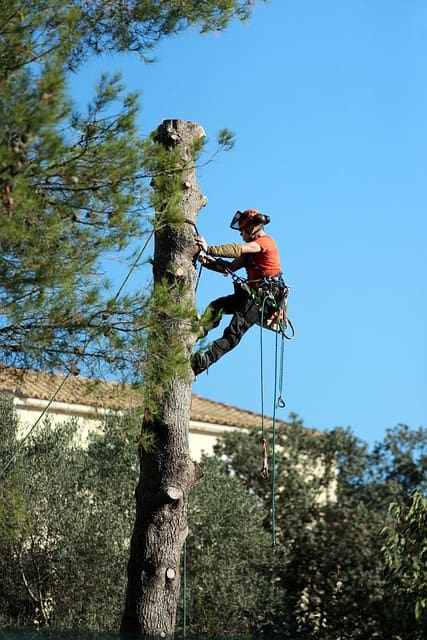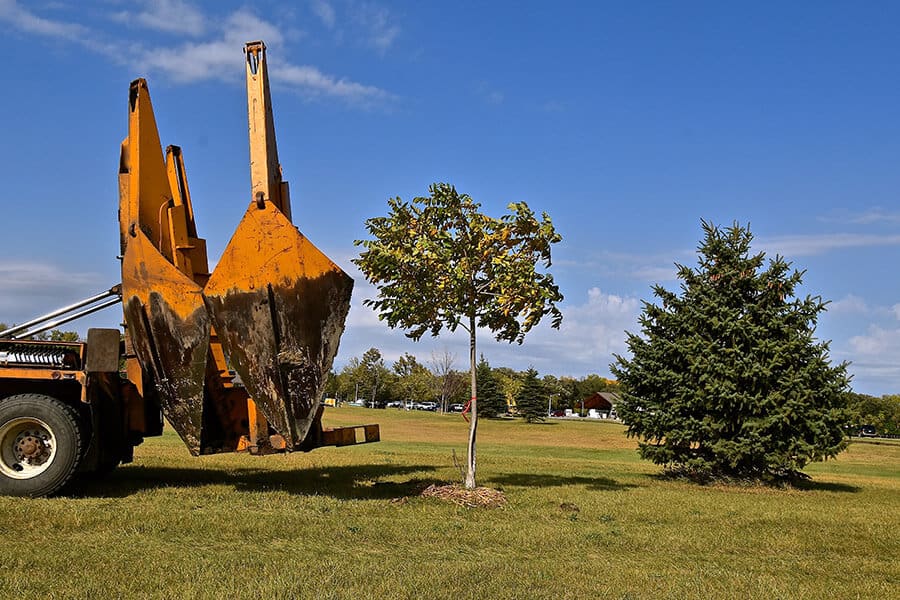Tree Health and Maintenance
What Does Seasonal Tree Pruning Do for Growth?


I’ve always wondered about the benefits of seasonal tree pruning for growth. Does it really make a difference?
Well, the answer is a resounding yes! Seasonal tree pruning plays a crucial role in promoting healthy growth and vitality. By removing dead or diseased branches, we create space for new growth and allow sunlight to reach the inner parts of the tree.
In this article, we will explore the key benefits of pruning for tree growth and learn the best techniques to ensure optimal results.
Importance of Seasonal Tree Pruning
One important aspect of tree care is understanding the importance of seasonal tree pruning. Pruning trees at the right time of year is crucial for their growth and overall health.
Seasonal tree pruning helps to remove dead or diseased branches, allowing the tree to allocate its resources more efficiently. This promotes better growth and reduces the risk of pests and diseases.
Additionally, pruning can shape the tree and improve its aesthetic appearance, making it more visually appealing. By regularly pruning trees, we can ensure that they remain healthy and strong, enhancing the beauty of their surroundings.


It’s essential to consult with a professional arborist to determine the appropriate time and method for pruning specific tree species, as different trees have different requirements.
Key Benefits of Pruning for Tree Growth
Pruning plays a crucial role in promoting the growth and overall health of trees. It helps in shaping their structure, ensuring optimal sunlight exposure, and reducing the risk of disease and pest infestation.
Here are some key benefits of pruning for tree growth:
- Enhanced air circulation: Pruning removes dead or overcrowded branches, allowing for improved air circulation within the canopy. This reduces the risk of fungal infections and promotes healthy growth.
- Increased sunlight penetration: By selectively removing branches, pruning allows more sunlight to reach the lower branches and trunk. This stimulates photosynthesis, leading to better energy production and overall growth.
- Structural strength: Pruning helps develop a sturdy and well-balanced tree structure. By removing weak or crossing branches, it reduces the risk of breakage during storms and enhances the tree’s ability to withstand adverse weather conditions.
- Disease prevention: Pruning promotes good tree health by removing diseased or infected branches promptly. This prevents the spread of diseases and protects the overall vitality of the tree.
- Aesthetic appeal: Pruning enhances the visual appearance of trees by maintaining a neat and well-maintained shape. It creates a sense of belonging and contributes to the overall aesthetic value of the landscape.
Best Time to Prune Trees for Optimal Growth
I prefer pruning trees during the dormant season for optimal growth. The dormant season is the period when trees aren’t actively growing, usually in late winter or early spring.
During this time, the tree’s energy is focused on root development rather than foliage growth. Pruning during the dormant season allows the tree to allocate more resources to root growth, resulting in a stronger and healthier root system.
Additionally, pruning during this time reduces the risk of disease transmission and insect infestation, as many pests are less active during the dormant season.
Techniques for Effective Seasonal Tree Pruning
To achieve effective seasonal tree pruning, it’s important to understand and implement proper techniques. Here are some techniques that can help you achieve optimal results:


- Prune at the right time: Timing is crucial when it comes to seasonal tree pruning. Different species have different growth patterns, so it’s important to know when to prune each specific tree to maximize growth and health.
- Use the right tools: Investing in high-quality pruning tools is essential for effective pruning. Sharp, clean-cutting tools minimize damage to the tree and promote faster healing.
- Remove dead or diseased branches: Removing dead or diseased branches not only improves the appearance of the tree, but it also prevents the spread of disease and promotes overall tree health.
- Maintain the tree’s natural shape: When pruning, it’s important to maintain the tree’s natural shape and structure. Avoid excessive pruning, as it can weaken the tree and make it more susceptible to pests and diseases.
Common Mistakes to Avoid When Pruning Trees for Growth
One common mistake to avoid when pruning trees for growth is excessive pruning. While pruning is necessary for promoting healthy growth and maintaining the shape of the tree, over-pruning can have detrimental effects. Excessive pruning involves removing an excessive amount of branches and foliage, which can weaken the tree and hinder its ability to photosynthesize and produce energy.
It’s important to remember that trees need a certain amount of foliage to generate food through photosynthesis. Another mistake to avoid is improper timing of pruning. Pruning during the wrong season can disrupt the tree’s growth cycle and lead to stunted or uneven growth.
It’s crucial to prune trees during their dormant period to minimize stress and maximize growth potential. By avoiding these common mistakes, you can ensure that your trees grow and thrive in a healthy and balanced manner.


Hello there! I’m Logan Foster, the green-thumbed social media marketer behind the vibrant world of 1800TreeGuy.com. With roots firmly planted in arboriculture, I’ve branched out to help clients cultivate their dream outdoor spaces, one leafy canopy at a time. My knack for nurturing nature is more than a profession—it’s a way of life.
When I’m not talking trees and teaching the art of arboreal care, you can find me cheering on the Bulldogs—my alma mater’s pride and my forever team. My environmental studies there didn’t just teach me about ecosystems; they instilled a lifelong passion for protecting our planet.
Off the clock, I’m an adventurer at heart. Whether it’s trekking the Appalachian trails, pedaling down a mountain path, or crafting guides to share the wonders of the wild, I’m happiest with soil under my nails and the sun on my face. And let’s not forget Yoda, my pug sidekick. He may not have mastered the art of stillness, but his joyful grins are my daily dose of happiness.
I’m all about making connections—between people and the great outdoors and between my clients and their ideal landscape visions. My approach is personal; every tree has a story, and every garden reflects its caretaker.
If you want to green your scene or share in my outdoor escapades, give me a shout on Instagram or Facebook. Let’s cultivate a conversation and grow a community rooted in a love for the lush life.







